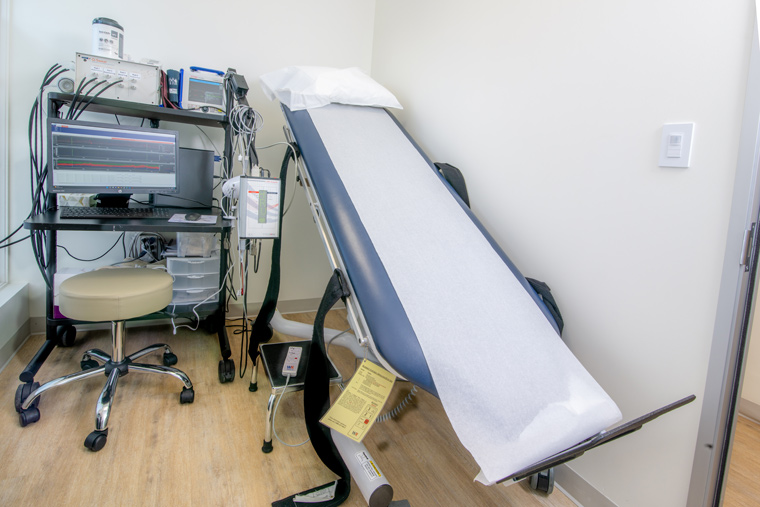The autonomic nervous system (ANS) controls blood pressure and pulse rate, blood flow to different parts of the body, sweating, bowel and bladder function, and sexual function.
As part of our center’s vision to provide advanced diagnostic services, we added a comprehensive, state of the art autonomic testing laboratory. These testing modalities aid in the diagnosis and treatment of the autonomic nervous disorders. We are one of the only advanced autonomic labs in the nation. For more information about the study and what you need to do to prepare, download the Autonomic Testing Education & Preparation forms.
Our providers use this study for the evaluation of dysautonomia and syncope. The safe and non-invasive complete testing includes four individual tests. Each individual test measures an aspect of the autonomic nervous system. All the tests are usually done in one session lasting less than 90 minutes.
- Sweat Test: Small plastic capsules are attached to the arms and legs. A machine is used to stimulate the sweat glands and measure sweat production. You may feel a slight local burning or tingling during this test.
- Heart Rate during Deep Breathing (HRDB) Test: This test measures your heart rate variation during deep breathing. You will be asked to breathe deeply and steadily at a rate of 6 breaths per minute guided by a moving green light.
- Valsalva Test: During this test you blow into a plastic tube for 15 seconds hard enough to produce a pressure of 40mm/Hg as indicated by a timer that you will be asked to observe. This test measures your blood pressure and heart rate response to Valsalva maneuver. The Valsalva maneuver is performed by attempting to forcibly exhale while keeping the mouth and nose closed, usually done by closing one’s mouth, pinching one’s nose shut while pressing out as if blowing up a balloon.
- The Tilt Table Test: After lying on a table for the first part of the test, you will be raised to a nearly upright position. You will be secured to the table so you cannot fall. The test will measure your blood pressure and pulse from laying to upright.
